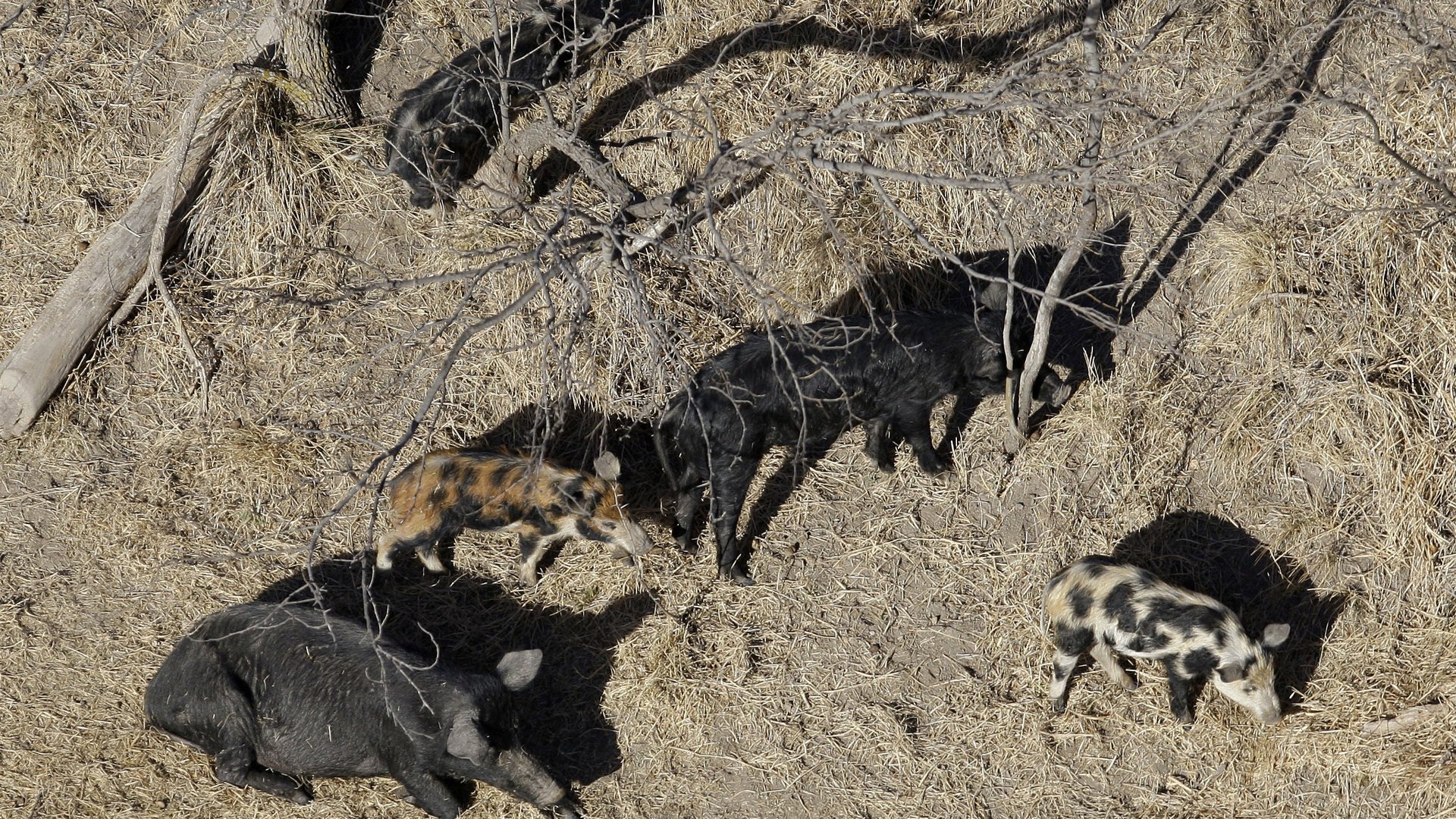6,000 pounds of rotting pig carcasses can teach you a lot about nature
The roughly 6 million wild boar in the southern US have been considered pests for years. Since European explorers and settlers in the 1500s brought the swine over as a food source, they’ve become a nuisance. They eat just about everything, have no natural predators, and degrade the environment to make it uninhabitable for native animals.


The roughly 6 million wild boar in the southern US have been considered pests for years. Since European explorers and settlers in the 1500s brought the swine over as a food source, they’ve become a nuisance. They eat just about everything, have no natural predators, and degrade the environment to make it uninhabitable for native animals.
But now, scientists have found a good use for them: Studying their rotting remains to see how forests respond to sudden mass animal die-offs.
In the summer months of 2016, researchers put out 6,000 pounds of dead feral pigs onto Mississippi State University’s forest land to watch them decay, National Geographic reports. The intent was to create a sort of ecological body farm, which are used in forensic science—except rather than studying what happens to bodies themselves, researchers are trying to see how local plants and animals respond to rotting animal carcasses.
Ecologists have become increasingly worried about mass die-offs, which happen sporadically when hundreds or thousands of animals in a species croak without warning. In 2015, dead sea animals washed up on the shores of Singapore en masse, likely because of toxic algae. In 2016, thousands of caribou suddenly perished in Alaska, and several ecosystems in Australia—including the coral in the Great Barrier Reef—have species of plants and animals dying at unprecedented rates. Some scientists suspect (pdf) that these events are related to climate change.
When living things die, other forms of life ranging from microbes to massive scavenging animals eat the remains. In marine settings, too many dead fish create “dead zones” in the water. The decomposition process by bacteria consumes all nearby oxygen, killing off even more creatures. Researchers have no idea what a surge of decaying matter will do to the surrounding environment on forest land, though.
In this case, ecologists and biologists decided to call in a few favors from pest management that had killed feral pigs in Mississippi and some of the surrounding states. They were able to secure a total of 6,000 pounds of pigs (no word on exactly how many that is, but feral pigs weigh roughly 110 to 200 pounds each), and dumped them in a forest with plans to track all sorts of environmental markers, like soil content and counts of other animals in the area.
The initial results, presented at the Ecological Society of America annual meeting last week, were astounding. The flood of maggots eating the dead pigs was reportedly several inches thick. These maggots brought in thousands of flies, hornets, armadillos, lizards, and vultures, who were all too happy to join the feast. Microbes broke down pig bodies so much that pools of of rotted pig fat made it impossible to reach some of the researchers’ environmental recording devices. All the activity in the soil killed several species of plants, too, which may eventually make room for more invasive species of plants to creep in.
The team plans to collect observational results from their ecological body farm until the pig bodies are completely gone, and the rest of the land returns to how it was before. “We’re going to measure this for the rest of our careers,” Marcus Lashley, a biologist from of Mississippi State working on the project, told National Geographic.